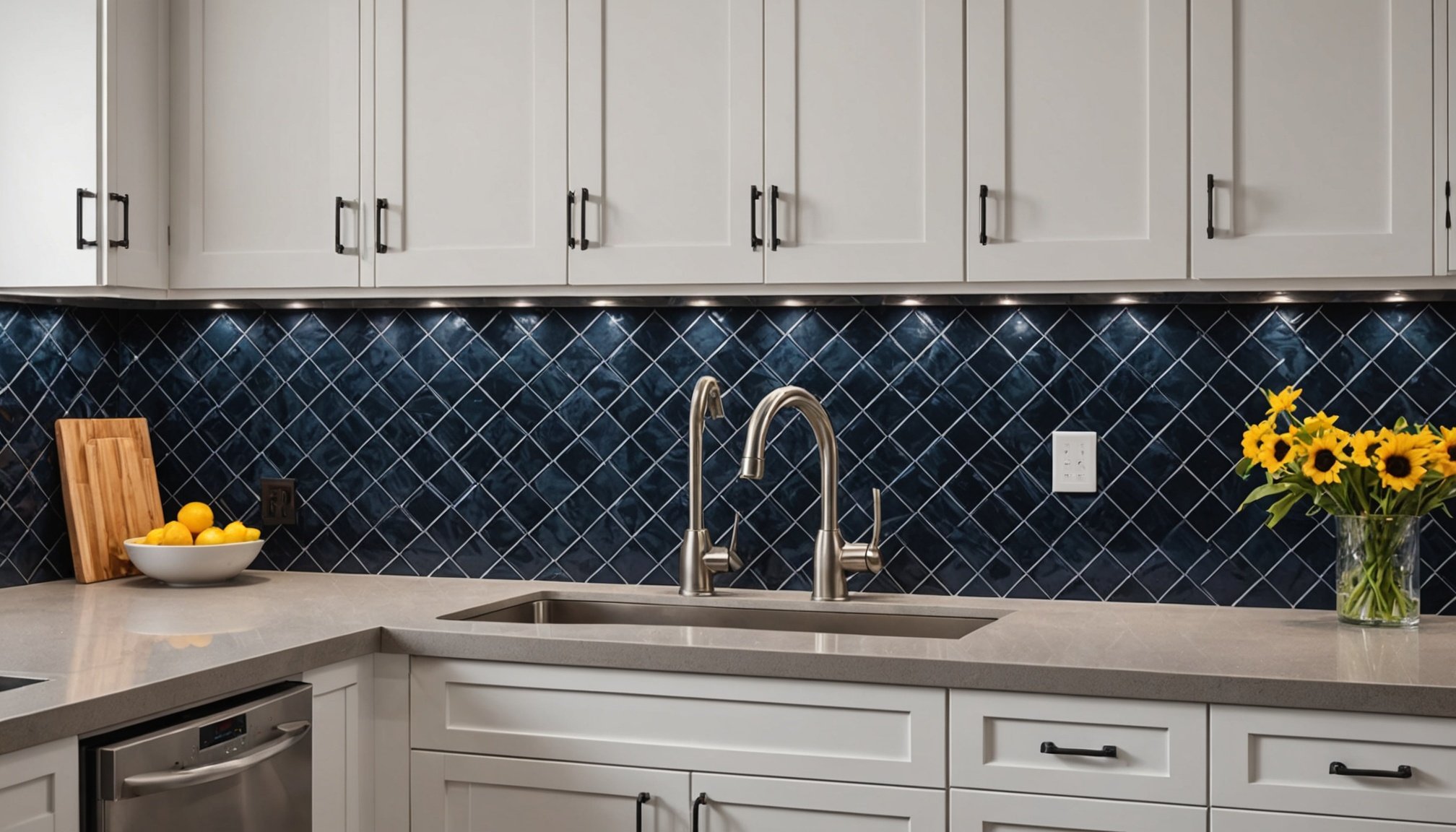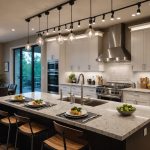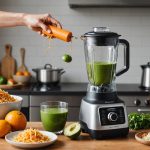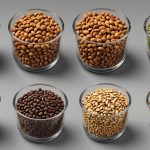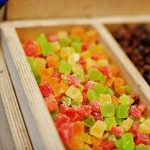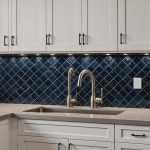Overview of Mold-Resistant Backsplash Materials
Selecting the right mold-resistant backsplash materials is essential for maintaining optimal kitchen hygiene. The kitchen, often a hub of activity, faces frequent moisture and food residue exposure, creating an ideal breeding ground for mold. By choosing materials designed to resist mold growth, homeowners can improve the overall cleanliness and safety of this space.
The aesthetic appeal of your kitchen can be enhanced through thoughtful material selection. Mold-resistant backsplash options, such as glass, stainless steel, and specially treated tiles, offer a sleek and modern look while ensuring long-term durability. These materials not only help maintain a clean appearance but also complement various kitchen designs, balancing functionality with visual appeal.
Also to read : Creative countertop edge designs that minimize spills and enhance style
When considering backsplash materials, it’s crucial to assess their resistance to moisture exposure. The kitchen environment demands materials that withstand frequent contact with water, steam, and splatters. Choosing mold-resistant options ensures that the longevity and aesthetics of your backsplash are preserved, providing both practical and stylish benefits.
In summary, prioritizing mold-resistant backsplash materials in your kitchen fosters better hygiene and enhances aesthetic appeal. By addressing moisture exposure and selecting durable, appealing materials, you can protect your kitchen from mold while maintaining its design integrity.
Also read : Revolutionize your modern kitchen with the benefits of touchless cabinets
Recommended Mold-Resistant Materials
Choosing mold-resistant materials can significantly enhance your kitchen improvement endeavors. Different materials such as glass, stainless steel, ceramic tiles, and stone options offer unique advantages.
Glass Backsplashes
Glass is an excellent choice for a backsplash material due to its inherent mold resistance. One primary benefit is its visual appeal; glass reflects light, creating a vibrant, airy feel in the kitchen. With a wide range of color options available, it can complement various kitchen designs seamlessly.
A significant advantage of glass is its easy maintenance. Simply wash with warm soapy water to maintain its cleanliness and sparkle over time. This low maintenance makes glass a practical and stylish choice for any homeowner.
Stainless Steel Backsplashes
Stainless steel stands out for its robust mold-prevention qualities. Renowned for its sleek and modern aesthetic, stainless steel backdrops can elevate any kitchen’s contemporary design.
Maintaining stainless steel involves simple care guidelines. Regular wiping with a damp cloth helps keep it free from spots and streaks, ensuring it looks new for years. Its durability and longevity make it a favored material in kitchen improvement projects.
Embrace these recommended backsplash materials to not only protect your kitchen from mold but also to add a dash of elegance and functionality.
Comparing Costs of Materials
When it comes to selecting a backsplash, understanding the overall cost is essential. A thorough backsplash cost comparison reveals that the initial price is only a portion of the total expense. For a budget-friendly approach, it’s crucial to evaluate both the upfront and long-term costs of different mold-resistant materials like ceramic, glass, and stainless steel.
To begin with, ceramic tiles are typically the most budget-friendly backsplashes. Their material pricing is generally lower, and they offer a wide array of designs. However, they can be prone to chipping and might require occasional repair.
Glass backsplashes are a slightly more expensive option but offer a sleek look that’s easy to clean. They minimize maintenance costs, which can be beneficial in the long run. Stainless steel, while often viewed as a premium choice, provides durability and resistance to wear, making it a smart long-term investment.
Hidden costs like installation should not be overlooked. Expert installation can mitigate future maintenance issues, ensuring longevity for any chosen material. Maintaining materials can also vary; therefore, calculating the full lifecycle cost helps in making an informed choice. Material pricing might seem daunting, yet choosing the right material can be a cost-effective investment over time.
Understanding these factors allows you to make an informed decision that balances initial costs with long-term benefits.
Design Ideas for Backsplashes
When considering kitchen design ideas, particularly for backsplash aesthetics, color coordination plays a significant role. Matching backsplash materials with cabinetry and countertops can transform your kitchen’s overall look. Opt for neutral tones if your existing décor is busy, while bold colors can create a striking feature when other elements are subdued. The choice of color affects your kitchen’s ambiance profoundly, with warmer tones adding coziness and cooler hues providing a fresh feel.
Color Coordination with Existing Décor
Carefully selecting patterns and designs escalates visual impact in your interior design. For instance, geometric patterns or subway tiles can add dynamism, while natural stone or mosaic styles bring elegance. Always consider how colors relate to one another across different surfaces to maintain harmony.
Accent Features and Borders
Incorporating accent features, such as mold-resistant materials, enhances both durability and aesthetics. Using these as accents creates focal points that draw the eye. Custom borders and finishes contribute to a personalized touch, redefining your kitchen design. Additionally, integrating lighting behind or beneath backsplash tiles can produce an impressive effect, accentuating textures and colors for a unique design approach. These elements combined can give your kitchen a distinctive character, resonating with your interior design vision.
Installation and Maintenance Tips
When considering backsplash installation, it’s crucial to decide whether to embark on a DIY journey or hire professionals. For a DIY approach, start with precise measurements and gather necessary tools, such as a level, trowel, and tile cutter. Professional help may be advisable for complex designs, ensuring accuracy and preventing costly mistakes.
In terms of materials, proper sealing is non-negotiable. This ensures the backsplash is water-resistant, preventing mold and mildew that thrive in damp environments. Apply an appropriate adhesive to bond materials. For renewed efficacy, sealant should be reapplied periodically following expert advice.
Routine maintenance tips are essential to prolong your backsplash’s lifespan. Regular cleaning with non-abrasive materials helps maintain appearance and prevents residue buildup. Immediate attention to spills prevents stains, particularly for materials like marble or granite. Similarly, grout lines require special attention, with periodic resealing to maintain integrity.
Expert Advice
- Professional Assessment: Seek expert advice for complex installations or unique materials.
- Sealant Application: Follow manufacturer guidelines for sealant application, focusing on coverage to enhance durability.
- Cleaning Protocol: Maintain a consistent cleaning schedule, mindful of appropriate cleaners to prevent damage.
Maintenance and installation require diligent effort and expertise. These strategies ensure longevity and efficacy, safeguarding your investment against time and wear.

